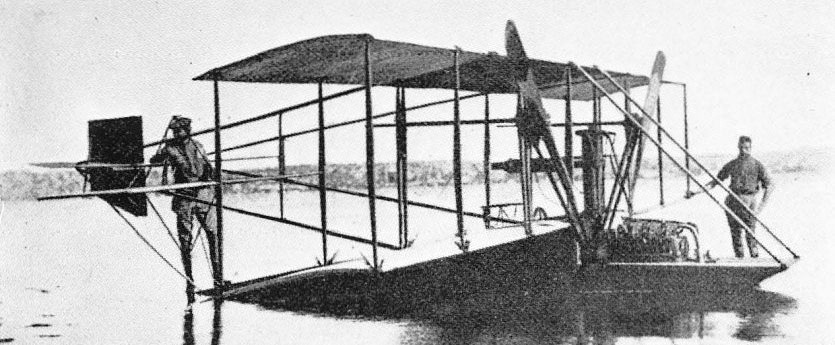
Описание
Страна: США
Год: 1912
P.Bowers Curtiss Aircraft 1907-1947 (Putnam)
Flying-boat Development
Following the perfection of the hydro aeroplane or seaplane, which was simply a landplane with floats substituted for wheels, Curtiss sought to develop a true flying-boat. The distinction lay in the fact that the boat-like hull formed an integral part of the structure rather than being an interchangeable accessory as on the hydro. Although others were working on the same idea concurrently, Glenn Curtiss is recognized as the inventor of the aeroplane configuration known as the flying-boat. The basic layout that he developed in 1912 became the world standard for single-engined flying-boats and is still being used.
Flying-boat No.1. The first Curtiss flying-boat, tried at San Diego on 10 January, 1912, was more a hydro than a true boat. A wide hull, only slightly longer than the standard Curtiss pontoon, was attached under the lower wing of the de-engined airframe of the tractor seaplane. A single 60 hp engine was mounted in the hull and drove two tractor propellers through chains in Curtiss's only deliberate adaptation of a Wright brothers' feature. There were two side-by-side seats in a cockpit behind the wing.
Although No.1 was unable to take off, the experiment did indicate that the flying-boat concept was practicable. Subsequent developments were made at Hammondsport.
Flying-boat No.2, The Flying Fish. The first successful flying-boat, built at Hammondsport, featured a full-length flat-bottomed hull that supported both the wings and tail. To keep the horizontal tail surfaces out of the water, they were sited part-way up the long vertical fin.
The engine was a 75 hp Curtiss Model O installed between the wings as on standard pushers. An indication of the fact that Flying-boat No.2 was built quickly and cheaply to prove a concept rather than to achieve optimum performance is shown by the initial use of an old set of 1910-style single surface wings. Forward elevators were also fixed to the bow at a time when they were being omitted from production aeroplanes. Flying-boat No.2 underwent considerable modification and refinement within a short period, ending up with double surface E-75 wings and no forward elevators. In this configuration, it was widely publicized as The Flying Fish.
At first, Flying-boat No.2 would not leave the water; the hydrodynamic drag of the hull prevented it from reaching flying speed. After observing the difficulty from an accompanying motorboat, Curtiss suggested breaking the smooth line of the bottom with a step just behind the centre of gravity.
Incorporation of the hydroplane step had two beneficial effects. First, it removed nearly half the length of the hull from contact with the water at near-take off speeds; second, it permitted a degree of rotation at take off speed to allow the wings to reach the higher angle of attack needed for take off. Too much rotation, however, put the rear of the hull back in the water and the added drag killed the take off speed. The step worked so well that Curtiss patented it, along with vents that allowed air to bleed into the water cavity behind the step to further reduce drag at take off speed.
Fitted with the step, Flying-boat No.2 made its first flight in July 1912.
Описание:
- P.Bowers Curtiss Aircraft 1907-1947 (Putnam)
- H.King Aeromarine Origins (Putnam)
Фотографии
-
H.King - Aeromarine Origins /Putnam/
Glenn Curtiss' first flying boat - the 'family hydro', with its tail carried on outriggers and twin propellers driven through chain transmission from the hull-mounted engine, was not a success but proved that the concept of a hull-borne seaplane was practical.

